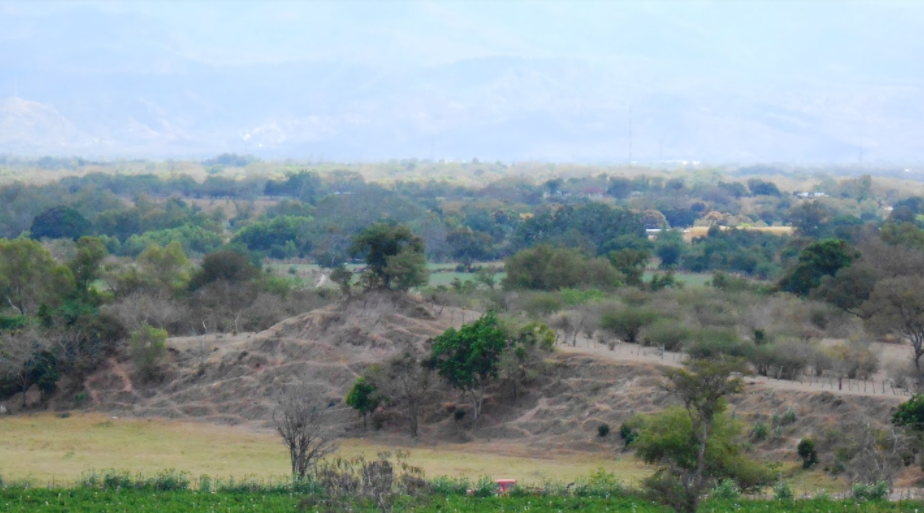Yarumela is a significant archaeological site located in the Lower Ulua River Valley in western Honduras. It stands as a testament to the complexity and ingenuity of pre-Columbian societies in Central America. The site is particularly known for its large earthen mounds and its role in understanding the development of social complexity in the region. Yarumela provides valuable insights into the lives, cultures, and architectural practices of the people who thrived there long before European contact.
Get your dose of History via Email
Historical Background of Yarumela
Archaeologists discovered Yarumela in the 20th century, revealing its importance to Mesoamerican history. The site dates back to the Middle Preclassic period, around 900-400 BC. It was a major center during the Formative period, indicating a complex society with significant regional influence. The builders of Yarumela were part of a civilization that predated the Maya and contributed to the cultural foundation of the region.
Yarumela’s inhabitants developed a society with advanced knowledge of agriculture, trade, and urban planning. They built monumental structures that have stood the test of time. The site was later inhabited by different groups, including the Maya, who left their mark on the area. Yarumela’s strategic location made it a hub for cultural exchange and interaction among various Mesoamerican civilizations.
While not the scene of any known historically significant events, Yarumela’s value lies in its everyday life remnants. These provide a window into the past. The site’s discovery and ongoing excavations have been spearheaded by local and international archaeologists. They aim to uncover the mysteries of the people who built this impressive site.
The construction of Yarumela’s mounds and its urban layout suggest a well-organized society with a high degree of social stratification. The site’s complexity indicates that it may have been a political or ceremonial center, playing a crucial role in the region’s dynamics. The mounds themselves are a testament to the society’s engineering skills and labor organization.
Yarumela’s significance extends beyond its physical structures. It provides insights into the social and political organization of early Mesoamerican societies. The site continues to be an important focus for researchers seeking to understand the development of complex societies in Central America.
About Yarumela
Yarumela is characterized by its impressive earthen mounds, which dominate the landscape. These mounds were likely used for ceremonial or administrative purposes. They are a hallmark of the site’s architectural achievements. The largest mound, known as La Danta, measures approximately 30 meters in height, making it one of the most prominent features of Yarumela.
The construction methods of Yarumela’s mounds involved the movement of massive amounts of earth. This required a well-organized workforce and advanced knowledge of engineering. The mounds were built using local materials, including clay and river sediment, which were readily available in the surrounding area.
Architectural highlights of Yarumela include not only the mounds but also the remnants of residential areas, plazas, and possible ball courts. These features suggest that Yarumela was a multifaceted site with various public and private spaces. The layout of the site indicates a complex urban plan with a high degree of organization.
The building materials and construction techniques used at Yarumela reflect the ingenuity of its inhabitants. They adapted to their environment and utilized available resources to create a sustainable urban center. The site’s architecture provides a glimpse into the technological capabilities of the society that built it.
Yarumela’s architectural features are not only impressive in scale but also in their alignment and orientation. Some structures align with astronomical events, suggesting that the inhabitants had advanced knowledge of astronomy and calendar systems. This aspect of Yarumela’s design further underscores the sophistication of the society that thrived there.
Theories and Interpretations
Several theories exist about the purpose and significance of Yarumela. Some scholars suggest it was a ceremonial center, while others believe it played a role in regional governance. The large mounds may have served as platforms for temples or elite residences, indicating a hierarchical society with religious and political leaders.
The mysteries of Yarumela include the reasons behind its eventual decline and abandonment. Some theories point to environmental changes, while others suggest shifts in trade routes or conflicts with neighboring groups. The exact cause remains a topic of research and debate among archaeologists.
Interpretations of Yarumela’s artifacts and structures often rely on comparisons with other Mesoamerican sites. Researchers match findings at Yarumela with historical records from the region to piece together a broader cultural narrative. This comparative approach helps to contextualize Yarumela within the complex tapestry of pre-Columbian Central America.
Dating of Yarumela has been carried out using methods such as radiocarbon dating and stratigraphy. These techniques provide a timeline for the site’s occupation and development. The results have been crucial in understanding the chronology of events and the duration of Yarumela’s influence in the region.
The interpretations of Yarumela’s purpose and significance continue to evolve as new discoveries are made. Each finding adds a piece to the puzzle, allowing for a more nuanced understanding of this ancient site. The ongoing research at Yarumela is vital for unraveling the mysteries of its past and the people who built it.
At a glance
Country: Honduras
Civilization: Pre-Columbian, likely a precursor to the Maya civilization
Age: Middle Preclassic period, approximately 900-400 BC
Conclusion and Sources
Yarumela is a window into the pre-Columbian past of Central America, offering invaluable insights into the region’s history and culture. The site’s discovery and ongoing research continue to shed light on the complexities of ancient Mesoamerican societies. As excavations and studies progress, Yarumela’s significance in understanding the development of social complexity in the region becomes increasingly apparent.
Reputable sources used in the creation of this article include:
- Wikipedia: https://en.wikipedia.org/wiki/Yarumela

